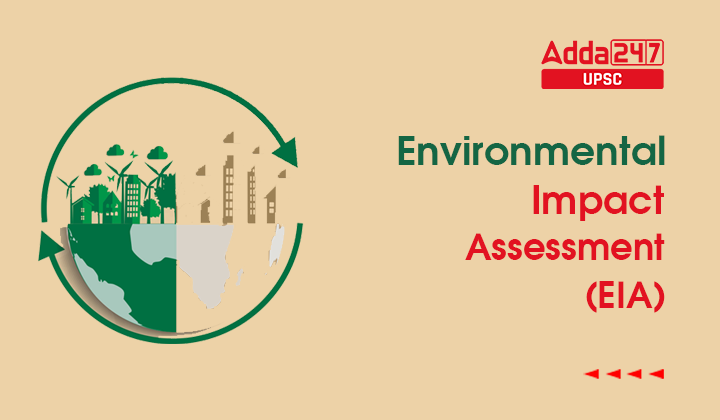Table of Contents
Environmental Impact Assessment (EIA) is a process of evaluating the potential environmental impacts of a proposed project, plan, or policy before it is implemented. It is a systematic process that involves identifying, predicting, and evaluating the likely environmental effects of a project, and proposing measures to mitigate any adverse effects. EIA is a critical tool for ensuring that development projects are designed and implemented in a way that minimizes harm to the environment and promotes sustainable development. The EIA process typically involves consultation with stakeholders, including local communities and environmental organizations, to ensure that their concerns and perspectives are taken into account.
What is EIA?
- Environment Impact Assessment or EIA can be defined as the study to predict the effect of a proposed activity/project on the environment.
- EIA is a decision-making tool that compares various alternatives for a project and seeks to identify the one which represents the best combination of economic and environmental costs and benefits.
- It provides information on the likely impacts of development projects to those who take the decision as to whether the project should be authorised.
What EIA does?
- EIA examines both beneficial and adverse consequences of the project and ensures that these effects are taken into account during project implementation.
- EIA helps to identify possible environmental effects of the proposed project, proposes measures to mitigate adverse effects and predicts whether there will be significant adverse environmental effects, even after the mitigation is implemented.
EIA benefits
- Protection of environment, optimum utilisation of resources and saving of time and cost of the project.
- Lessens conflicts by promoting community participation, informing decision makers, and helping lay the base for environmentally sound projects.
- Benefits observed in all stages of a project, from exploration and planning, through construction, operations, decommissioning, and beyond site closure.
Evolution of EIA
- EIA is one of the successful policy innovations of the 20th Century for environmental conservation.
- Thirty-seven years ago, there was no EIA but today, it is a formal process in many countries and is currently practiced in more than 100 countries.
- EIA as a mandatory regulatory procedure originated in the early 1970s, with the implementation of the National Environment Policy Act (NEPA) 1969 in the US.
- A large part of the initial development took place in a few high-income countries, like Canada, Australia, and New Zealand (1973-74).
- However, there were some developing countries as well, which introduced EIA relatively early – Columbia (1974), Philippines (1978).
The EIA process really took off after the mid-1980s. - In 1989, the World Bank adopted EIA for major development projects, in which a borrower country had to undertake an EIA under the Bank’s supervision.
History of EIA in India
- EIA started in 1976-77 when the Planning Commission asked the Department of Science and Technology to examine the river-valley projects from an environmental angle.
- Till 1994, environmental clearance from the central government was an administrative decision and lacked legislative support.
- In 1994, the Union Ministry of Environment and Forests (MEF), under the Environmental (Protection) Act 1986, promulgated an EIA notification making Environmental Clearance (EC) mandatory for expansion or modernisation of any activity or for setting up new projects.
EIA process
There are eight steps of the EIA process that are given below
- Screening: First stage of EIA, which determines whether the proposed project, requires an EIA and if it does, then the level of assessment required.
- Scoping: This stage identifies the key issues and impacts that should be further investigated. This stage also defines the boundary and time limit of the study.
- Impact analysis: This stage of EIA identifies and predicts the likely environmental and social impact of the proposed project and evaluates the significance.
- Mitigation: This step in EIA recommends the actions to reduce and avoid the potential adverse environmental consequences of development activities.
- Reporting: This stage presents the result of EIA in a form of a report to the decision-making body and other interested parties.
- Review of EIA: It examines the adequacy and effectiveness of the EIA report and provides the information necessary for decision-making.
- Decision-making: It decides whether the project is rejected, approved or needs further change.
- Post monitoring: This stage comes into play once the project is commissioned. It checks to ensure that the impacts of the project do not exceed the legal standards and implementation of the mitigation measures are in the manner as described in the EIA report.
Also Read:





 TSPSC Group 1 Question Paper 2024, Downl...
TSPSC Group 1 Question Paper 2024, Downl...
 TSPSC Group 1 Answer key 2024 Out, Downl...
TSPSC Group 1 Answer key 2024 Out, Downl...
 UPSC Prelims 2024 Question Paper, Downlo...
UPSC Prelims 2024 Question Paper, Downlo...





